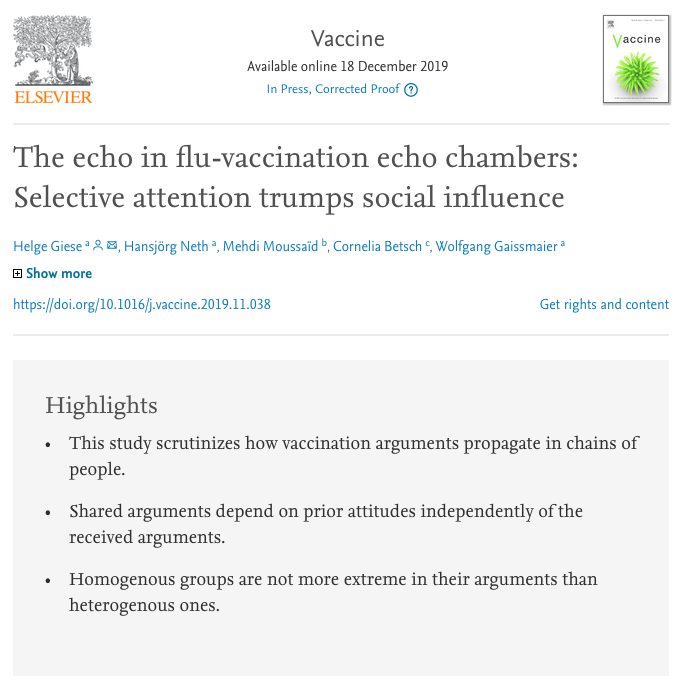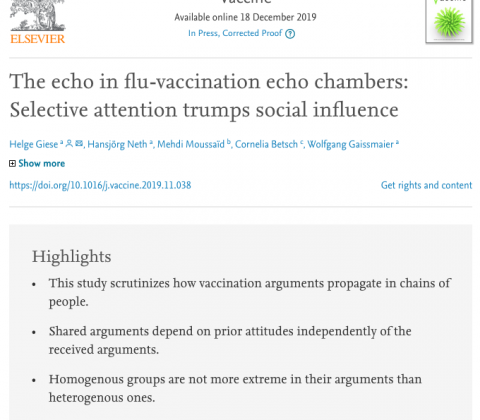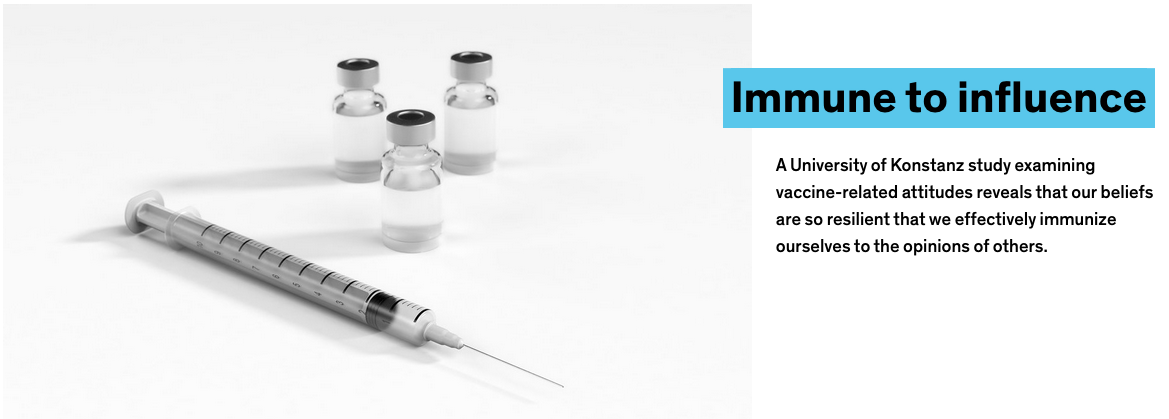Posts Tagged: JDM
judgment & decision making


Chapter: How can decision models decide to not decide? Modeling suspension in fast-and-frugal trees (FFTs)
Hansjörg Neth, Jelena Meyer
How can decision models decide to not decide?
Modeling suspension in fast-and-frugal trees (FFTs)
Abstract
The phenomena of indecision and suspension loom large in both philosophy and psychology. Whereas psychology discusses related phenomena in practical tasks and mostly pathological terms, philosophy strives for conceptual clarification and emphasizes the ubiquity and variety of suspension.
In this chapter, we use fast-and-frugal trees (FFTs) as a drosophila model for developing a positive account of suspension in decision-making. Being designed for handling binary classification tasks, FFTs seem particularly ill-suited for accommodating a third stance. But by replacing one decision outcome by a do not know category or adding it as a third option, we can adapt and extend the FFT framework to explore the causes and consequences of suspension.
Considering the distributions of decision outcomes and contrasting the performance of alternative models in terms of cost-benefit trade-offs illustrates the power of this methodology. Overall, a model-based approach provides surprising insights into the functions and mechanisms of suspension and serves as a productive tool for thinking.
Keywords
-
fast-and-frugal trees (FFTs), judgment and decision making (JDM), heuristics, binary classification, cost-benefit trade-offs, indecision, computer modeling, philosophy, machine learning, suspension
Reference
- Neth, H., & Meyer, J. (2025). How can decision models decide to not decide? Modeling suspension in fast-and-frugal trees (FFTs). In V. Wagner & A. Zinke (Eds.), Suspension in epistemology and beyond (pp. 286–303). New York, NY: Routledge.
doi 10.4324/9781003474302-20
Related: FFTrees: An R toolbox to create, visualize, and evaluate FFTs
Resources: 10.4324/9781003474302-20 | Download PDF | Google Scholar
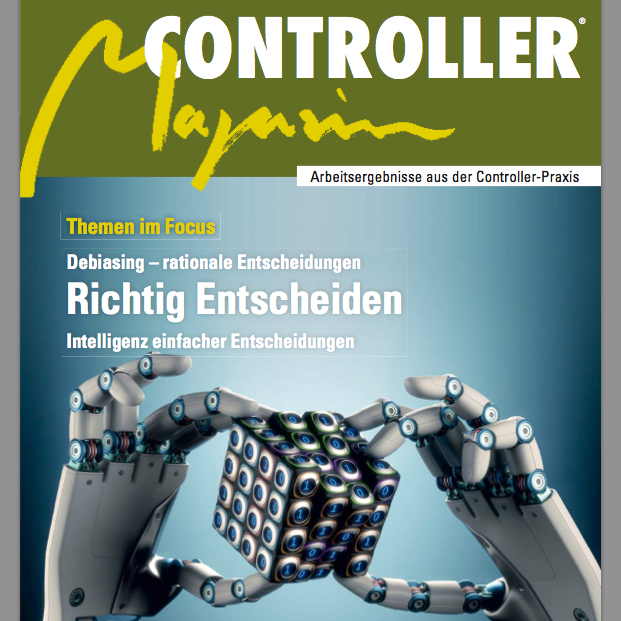
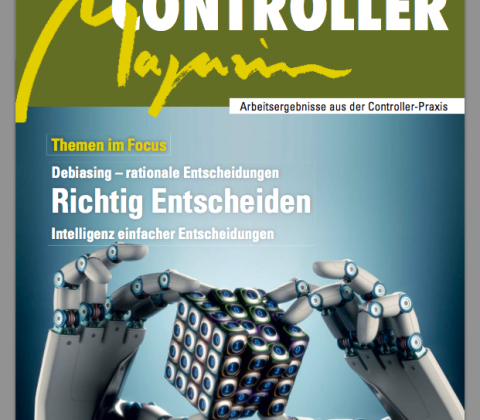
Artikel: Die Intelligenz einfacher Entscheidungsregeln
(Philip K. Dick, 1968)
Wolfgang Gaissmaier, Hansjörg Neth
Die Intelligenz einfacher Entscheidungsregeln in einer ungewissen Welt
Fazit: Unsere Welt mag sicher oder unsicher sein, aber wird immer eine ungewisse bleiben. Wir sollten uns von der Illusion ihrer umfassenden Berechen- und Kontrollierbarkeit verabschieden, ohne deswegen in Angststarre zu verfallen. Denn gute Entscheidungen sind dennoch möglich und beruhen auf einer angemessenen Einschätzung unserer Ausgangslage: Je berechenbarer eine Situation ist („Risiko“), desto mehr brauchen wir statistisches Denken und komplexe Modelle; je unberechenbarer eine Situation ist („Ungewissheit“), desto mehr brauchen wir einfache Heuristiken, einschlägige Erfahrung und Vertrauen auf Intuition (vgl. Abbildung 1). Dabei handelt es sich bei Risiko und Ungewissheit um Pole eines Kontinuums, so dass es sich bei den meisten Situationen um einen Zwischenzustand handeln dürfte. Die Kunst des guten Entscheidens besteht darin, zu wissen, wo auf diesem Kontinuum wir uns befinden, um das jeweils passende Entscheidungswerkzeug geschickt auszuwählen und gezielt zum Einsatz zu bringen. Und sie erfordert den Mut, Entscheidungen nicht zu verschieben oder zu vermeiden, sondern sie beherzt zu treffen und die Verantwortung für ihre Konsequenzen zu tragen.
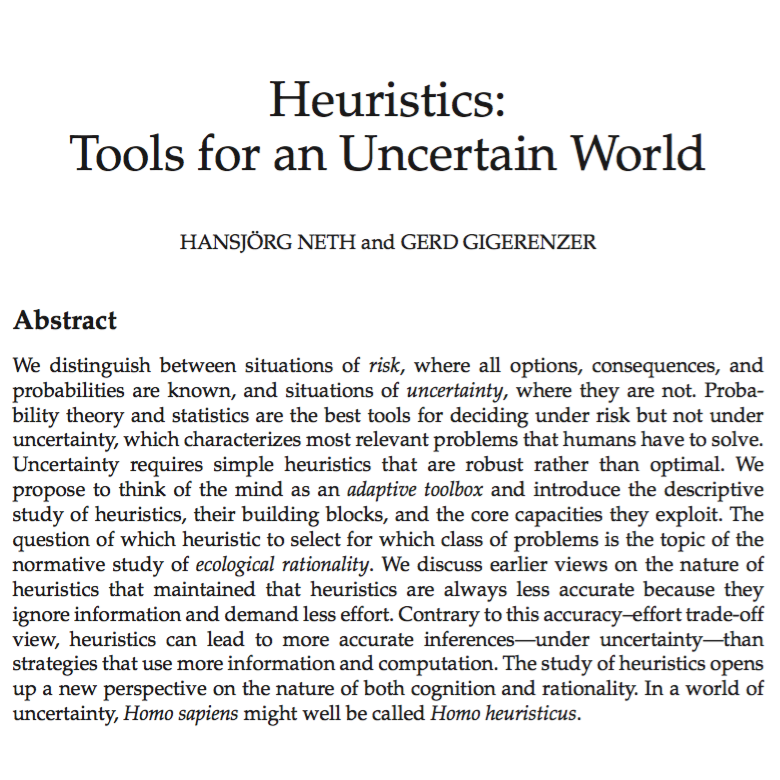
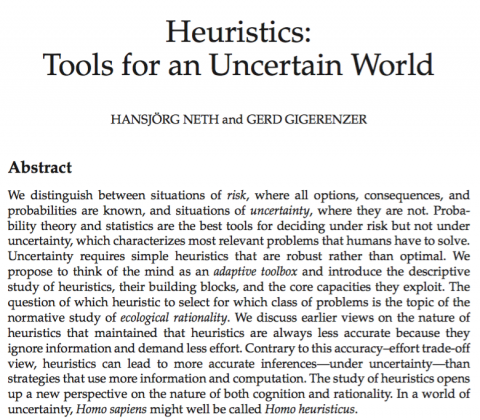
Article: Heuristics — Tools for an uncertain world
to treat everything as if it were a nail.
Abraham H. Maslow (1966, p. 15f.)
Hansjörg Neth, Gerd Gigerenzer
Heuristics: Tools for an uncertain world
We distinguish between situations of risk, where all options, consequences, and probabilities are known, and situations of uncertainty, where they are not. Probability theory and statistics are the best tools for deciding under risk but not under uncertainty, which characterizes most relevant problems that humans have to solve. Uncertainty requires simple heuristics that are robust rather than optimal.

